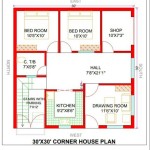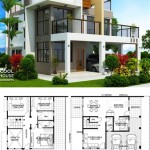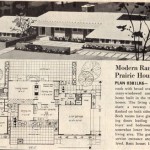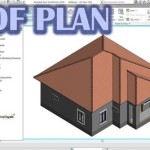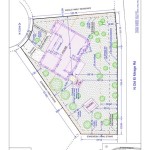What Is a Layout Plan for Construction?
A layout plan in construction serves as a blueprint, a visual representation of how a building or structure will be arranged on a plot of land. It's a critical document that outlines the placement of various elements, including the building itself, landscape features, utilities, and access points. This plan is essential for ensuring the efficient and coordinated execution of construction projects, from the initial design phase to the final completion.
Key Elements of a Layout Plan
A comprehensive layout plan typically includes the following elements, which are crucial for conveying the project's design intent:
1. Building Footprint and Dimensions
This element clearly defines the shape and size of the proposed building, including its overall length, width, and height. It also shows the location of internal walls, rooms, and other structural components. This detailed information is vital for accurately positioning the building on the site and determining the required foundation and structural systems.
2. Site Features and Topography
The layout plan incorporates the existing features of the land, such as trees, natural contours, property lines, and utilities. It depicts the elevation changes and any slopes on the site, providing essential context for understanding the site's conditions and how they might influence the building's orientation and design.
3. Landscape Features and Landscaping
The layout plan may include details about landscaping elements, such as walkways, driveways, patios, gardens, and water features. These features enhance the aesthetics and functionality of the site, and their placement needs to be carefully considered in relation to the building and other site features.
4. Utilities and Access Points
The layout plan illustrates the placement of essential utilities, including water lines, sewer connections, electrical power lines, and gas lines. It also shows access points for vehicles and pedestrians, including roads, parking areas, and entry points to the building. This detailed information is crucial for coordinating with utility providers and ensuring adequate access to the site during construction.
5. Building Orientation and Setbacks
The layout plan indicates the building's orientation, which refers to its alignment with the cardinal directions (north, south, east, west). This is important for maximizing natural light and ventilation within the building and for ensuring compliance with local building codes and zoning regulations. It also shows the setbacks, which are the minimum distances required between the building and property lines.
Importance of a Layout Plan
A well-developed layout plan offers numerous benefits for both the construction team and the project owner:
1. Efficient Planning and Coordination
The layout plan provides a comprehensive overview of the project, serving as a central source of information for all stakeholders. It helps to efficiently plan the sequence of construction activities, ensuring that the various building elements are installed in the correct order. This coordination helps to avoid costly delays and rework.
2. Accurate Material Estimation and Ordering
By accurately depicting the size and shape of the building and its components, the layout plan allows for precise material estimation. This prevents over-ordering or under-ordering of materials, which can lead to project delays and budget overruns. The accurate estimates also help in optimizing material acquisition and logistics.
3. Effective Site Management
The layout plan serves as a guide for site management, enabling the construction team to efficiently organize the work area, locate utilities, and navigate the site safely. It also facilitates the proper placement of construction equipment and materials, minimizing the risk of damage to existing features or utilities. This improved site management contributes to a smoother and more efficient construction process.
4. Compliance with Regulations and Standards
The layout plan must adhere to all relevant building codes, zoning regulations, and other applicable standards. It ensures that the building's placement and design comply with these regulations, preventing potential legal issues and ensuring the project's safety and legality.
5. Improved Communication and Collaboration
The layout plan serves as a visual communication tool, facilitating clear and concise communication between architects, engineers, contractors, and other project stakeholders. It helps everyone involved to understand the project's intent and requirements, minimizing confusion and ensuring everyone is working towards the same goal.

The Construction Layout Plan For Stage 1 Scientific Diagram

Construction Site Layout Planning

Representative Residential Building Layout Plan For Construction In Scientific Diagram

Construction Site Layout An Overview Biblus

Layout Planning Of Construction Site Considerations For Plans

Optimisation Of Site Layout Planning For Multiple Construction Stages With Safety Considerations And Requirements Sciencedirect

Site Layout Plan For Construction House Building

Layout Of Building Terminologies Methods

Importance Of Building Site Layouts

Construction Site Layout An Overview Biblus
Related Posts

